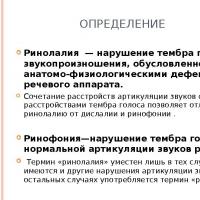Calculation of the amount of timber. How to calculate the amount of timber per house, assembling a house from a timber Calculation of a house from a timber calculator
If you are going to start building a house from wood building materials on your own, you need to know how to calculate the amount of timber per house.
If as a wall material for residential or country house timber is chosen, then this choice is very correct. A lot has already been written about the positive characteristics of the tree.
But wooden beam is even more economical material compared to round logs. After all, it has an exact geometry - in cross section it is a square or a rectangle. The walls of the house made of this material are even, which increases the amount of usable area inside the building.
In addition, the calculation of the number building material it is easier to make a log house from an ordinary or glued beam than from a rounded round log or even from a brick.
How to make the most accurate material calculations?
But these are only rough estimates. It is necessary to take into account the minimum and maximum length of the beam, which is purchased for construction. On sale there is a standard beam with a length of 2 to 6 meters. At the same time, it is rare to find four- and five-meter ones.
But the crowns (rows of masonry) must be made of solid material, without joints. Due to the presence of joints, especially if they are not tight enough, heat loss will occur. What to do when the house is 6x9? For a certain surcharge, you can order material with a length of 8, 9 and even 10 meters.
And one more thing is how to calculate the consumption of material for construction. Usually, when calculating how much timber is needed for a building, they do not take into account that it has door and window openings. Professional builders believe that “throwing” 20% on the material is a small problem. But this extra costs for the builder.
Absolutely accurately calculate the amount of material is almost impossible. There will always be cuts. For example, when a wooden pediment of a house with an attic is made, the area of the triangle is calculated. But not always the beam can be sawn so that it will go entirely to work. There will definitely be scraps left.
An example of calculations of wood material for a one-story house
A beam with a section of 10 × 10 cm is suitable for construction country house, which is intended only for temporary residence in the summer. For permanent housing, material with a large cross section is used. So the building will be warmer and more durable.

Let's try to calculate as accurately as possible how much timber 150x150 is needed for a house on one floor and an area of 10x10 meters. Such cottage quite suitable for a small family. It can accommodate the following necessary premises in a residential building:
- living room;
- children's;
- bedroom
- kitchen;
- bathroom;
- boiler room.
If you make rough calculations, then the total length of the walls will be: 10 × 5 + 4 × 4 \u003d 66 m. Of these, 4 walls are external and 5 internal. Let's take the height as 3 meters, although some make more. We decided that we were building from a bar with a section of 150 by 150 mm.

So, to find out the volume of material, we multiply these indicators: 66 × 3 × 0.15 = 29.7 m³.
But this is a rough estimate. Let's see how to calculate the cubic capacity of the timber more accurately.
It should be noted that the house has windows and doors. There will be 5 windows, one of them (small) is in the boiler room. There are 6 doors in the house, including the entrance.
In addition, it must be taken into account that bearing walls in building 5, and 4 - internal partitions. They can be made from a smaller section of timber, for example 100 × 100 mm.
So, the windows will occupy an area: 1.5 × 1 × 4 + 1.5 × 0.5 = 6.75. Multiply this number by the wall thickness (0.15) and get approximately 1 cubic meter. This is already a significant cost savings. It will amount to the very minimum of 6000 rubles. Perhaps such an amount will seem insignificant to someone, but, as they say, a penny saves a ruble.

The same calculations must be made with doorways.
In addition, you can not purchase all the material 10 meters long, for which you will have to pay extra. 10-meter bars will be needed only for the crowns, which will be located under and above the window openings. The rest of the material can be 2-, 3-, and preferably standard 6-meter. This will also provide some savings.
Conclusion on the topic
Manufacturers and sellers of lumber never approach building material counts in the manner described above. It is in their interest not to consider possible savings. But the developer must approach the calculations from the consideration of cost savings. Indeed, by saving a little money on various details, you can get additional material opportunities, for example, for home decoration.
More articles on this topic: 
W- board width
H- board thickness
L- board length
Initial data
N- quantity in pieces
E- quantity in cubic meters
Many, when building a house or a bath, are faced with the need to calculate how much lumber is required for work. Determining how much board or timber you need is simple. But the price of lumber is usually indicated for cubic meter, and in this case it will be more convenient to use a special program for calculations. With the help of our website, knowing the length, width and thickness of the board, as well as their number in pieces, you can calculate how many cubic meters of lumber you will need and how much one cubic meter or one board will cost.
Scope of application
Lumber is so called because it is obtained by sawing the trunk of a tree. Lumber is used for construction, furniture manufacturing, various containers and other products. Today, this type of building materials is the most popular. The wood from which sawn timber is made is an excellent heat-insulating material, maintains a stable humidity and does not require special treatment and care, which makes it especially convenient.Types of lumber
Timber includes timber, edged boards, unedged boards, building slats. The beam is a log processed from all sides. In the cut, it has a square or rectangular section. The timber is most widely used in the construction of houses, baths and floor structures.Edged board is a versatile lumber, which is actively used both in construction work outside the building and in the design of the interior space. Edged board in cross section is an elongated rectangle. An unedged board differs from an edged board in that its edges are not cut off, so that a layer of the bark of the tree from which this board was cut remains visible. A building rail or bar is a bar with a smaller section than a regular one and is widely used in construction.
Lumber is classified according to the type of wood from which it is made. They are made from coniferous trees such as pine, spruce and larch. And from hardwoods such as oak and beech, birch, aspen.
Lumber is also distinguished by moisture content. They are divided into raw with a moisture level of more than 22 percent and dry with a moisture content below 22 percent. The former are used for construction work, and the latter for the manufacture of furniture.
There are also several varieties of lumber. The choice of grade depends on the application. So, for furniture, materials of the highest grade are used. For joinery and moldings, grade 1 lumber is suitable, and grade 2 and 3 are used exclusively as a building board. Lumber, if not used for a long time, must be protected from moisture. This can lead to their deterioration. It is not recommended to store lumber stacked on top of each other. There must be spacers between the layers of beams or boards.
Using timber as a building material for a house has a lot of positive aspects. This product is environmentally friendly, affordable and, accordingly, the most popular. Just keep in mind that construction wooden house requires preliminary preparation and carefully calculated estimates. After all, a well-thought-out plan will allow you to distribute costs evenly and prevent unnecessary costs.

Peculiarities
When choosing a bar as a building material, you need to remember that it has several types, each of which has its own characteristics. distinctive features. The most acceptable is a tree 140x140 mm. And also the timber can be of natural moisture, profiled and glued. The first option is the most common, since its cost is much lower than the others. It is quite durable and has a beautiful appearance, which does not require additional finishing work.

The profiled type of timber is more airtight. A house made of such material does not need additional insulation, since during installation it is fixed quite tightly. The shrinkage is approximately 5%. Its reduction can be achieved due to the horizontal internal cut of the timber. The final fastening of the bars to each other is provided by the “thorn-groove” rim connection system.

many owners wooden houses understand how important this parameter is. The amount of shrinkage depends on many indicators: the time of sawing the tree, climate, construction time and laying technology. For planed and facing logs, shrinkage is more than 10%. Therefore, the beam in this case has its positive aspects.
The glued look is quite expensive, due to the fact that there is practically no shrinkage. This advantage allows you to start the operation of the building immediately after the completion of construction work.

When a house is being built from a log house, you should let it stand for a while. Do not immediately cut openings for future windows and doors. It is necessary to wait for shrinkage. Only after the box has stood, it is possible to cut openings through the crown. For uniform shrinkage, the walls are assembled on wooden dowels, which do not allow horizontal twisting of the timber. And also "winter" wood is more suitable for building a house, as it is drier. Therefore, shrinkage is affected by the time factor when the tree was cut down.


As stated earlier, glued and dry planed timber does not need a "rest" after erection. The percentage of shrinkage for such types is either insignificant or completely absent. Only now the cost of such a bar exceeds by 20-60% of the profiled version. If, nevertheless, cracks appear in the walls between the joints, then these places need to be caulked, for example, with moss or jute felt.
Just don't worry. The appearance of cracks is a common and natural process that must be taken into account when building a house and choosing a certain type of timber for it.


Cubic capacity per 100 square meters or 120 square meters. m can be calculated independently, taking into account the recommendations of experts. It should be that there is a formula for calculating cubes, to know the weight of the material and how much timber it takes to build a house, for example, with a section of 200x200 mm.

Projects
Drawing up a project for the future home will allow you to know exactly what kind of house it will be, what material and where it will be used, and most importantly, how the cost estimate will be drawn up. Preliminary preparation will significantly save not only the budget, but also the time spent on construction. The project should take into account the size of the house, the number of rooms and their area, the number of floors, the presence of additional buildings adjacent to the main housing. You also need to specify the location of window and door openings.
To calculate the dimensions, remember that the length of the timber is 6 meters. If the wall of the house exceeds this number, then the beams will have to be joined.


All these difficulties can stop the entire construction process. So, If you are not sure that you can completely cope with all the work yourself, you should contact a specialist. In this case, although it will be necessary to overpay, the costs will be justified.
Before erecting the foundation, you need to dig a trench 70 cm deep, and the width will depend on the number of floors. Standard values are 40-50 cm.

Next, you need to make a mixture of gravel and sand, which is laid in trenches. After completing all these points, a formwork of 1 meter is installed. Only then can concrete be poured, the proportions of the components of which will be determined by personal preference. A more liquid mass is only suitable if there are no gaps in the formwork.



The construction of the walls is the laying of beams in rows. The first strapping row must be carefully treated with an antiseptic.


All crowns are pulled together every 1.5 m with special nails measuring 6x200 mm, or they are also called dowels, to prevent horizontal twisting of the beams when the wood dries. Thus, wall shrinkage can be reduced. Arrange the dowels in a checkerboard pattern, and cut a vertical sample in the corners.

The roof usually consists of a supporting structure and a metal tile roof. For reinforcement, a crate is used. When building a roof, the first step is to tie the upper crown with a beam with a section of 5x15 cm. Then you can install rafter legs from boards 100x40 mm with a gap between them of about one meter. For the fronts, boards with a section of 25x150 mm are used, then the installation stage of the crate comes.


If the roof is made of soft material, then you need to cover it in two layers in order to better protect the house from moisture. If the project provides for an attic that will be used as a living space, then thermal insulation will need to be purchased and installed before the final installation of the roof.
The log house has its own distinctive features. This applies to the very type of tree, taking into account its size and characteristics. Therefore, it is necessary to approach the preparation and writing of the project, having familiarized yourself with all the nuances, so that there are no difficulties at the initial stages of construction. frame, two-storey house with an attic can be 8x8, 9x9, 9x7, 10x10, 6x9 or 9 by 10 m in size.


How to calculate?
Building a house is a rather complicated process, but it's worth it. After all, the result will be your own suburban housing, which can be located next to a forest or lake. This will allow at least a few times a year to live in the fresh air or even move to permanent residence. It actually sounds great to be inspired to build your own home. Only now, many make the same mistake when building housing, which can lead to freezing the entire process.

Wrong calculations are the main enemy in construction. Any extra figure in the project drawings or estimates can lead to serious consequences. Therefore, it is worth giving Special attention correct calculation of all sizes and the required amount of building materials. All measurements generally depend on the following factors:
- type of timber used;
- the number of bars;
- the number of bars in 1 cubic meter;
- what house project is used.



To calculate the amount of timber in 1 cubic meter, the simplest calculation method is used. To do this, calculate the perimeter of the house, multiplied by the height. The result is then multiplied by the thickness of the material. The total represents the quantity to be purchased. Just keep in mind that cutting out door and window openings will significantly reduce the amount of timber. Therefore, you need to add 20% to the total. This allows you to get the final result. For internal walls the calculation method will be the same.

The first crown is much thicker than the others. For him, the calculations are performed separately.
Having received data on the amount of timber required per 1 cubic meter, you can find out exactly how many pieces you need to buy. No need to calculate the volume of the product right in the store with a tape measure. The thickness and height of each beam may vary, so you should decide in advance what size you need. The thickness can vary within a given range, namely:
- 100x100 mm;
- 100x150 mm;
- 150x150 mm;
- 150x200 mm;
- 200x200 mm.

The height depends on the interventional seams. The fewer there are, the faster they pass. construction works. As for the width, this indicator is more important. Especially when building a house for permanent residence for which a beam with a thickness of 200 mm is suitable. Products different thickness and widths differ from each other, and it is extremely thoughtless to acquire bars of unequal sizes. Learning all the nuances is extremely important. Thus, you can save money and not become a victim of a dishonest lumber seller.
All calculations must be made at the stage of project development. By studying the prepared drawings, it will be known how much and what material is needed. If you feel incompetence in this matter, then you should contact construction companies or read the information on specialized sites. You can also find on the internet finished projects with all sizes and quantity of the necessary materials.

Everyone strives to do something with their own hands. This kind of work brings more pleasure. And building a house yourself is really a great achievement and the result of a huge amount of work done. Timber is a very good building material. It is healthy and absolutely safe. Wood, unlike other materials, does not contain harmful impurities and has a positive effect on human well-being. For example, it can maintain an optimal indicator of humidity in the room.
To make a beam, they take a whole tree and cut out rectangular beams.

Conifers are best suited as the strongest and most durable material. In addition, the resin very well prevents the product from rotting.
Yet even such a high-quality and natural material has its drawbacks. It requires constant impregnation that protects the tree from the process of decay. The next disadvantage is the high cost, especially for glued timber. If the material is not properly dried, then its quality will deteriorate significantly.
| FOUNDATION: | |
| rubble: | |
| 6.8 m³ x 1900 rub/m³ | 12920 rub. |
| concrete M200: | |
| 5.2 m³ x 4200 rub/m³ | 21840 rub. |
| concrete M200: | |
| 22.7 m³ x 4200 rub/m³ | 95340 rub. |
| bar fittings Ø10, 12, 14 AIII: | |
| 1.5 t x 37500 rub/ton | 56250 rub. |
| foundation blocks FBS 24-3-6: | |
| 36 pcs. x 2360 rub./pc. | 84960 rub. |
| cement-sand mixture: | |
| 1 m³ x 2700 rub/m³ | 2700 rub. |
| coniferous board for formwork: | |
| 1.1 m³ x 6500 rub/m³ | 7150 rub. |
| roofing material RKK-350: | |
| 3 rolls x 315 rubles/roll (10m²) | 945 rub. |
| TOTAL: on the foundation | 282105 rub. |
| COVERS: | |
| wooden bars 150x50; 170x100; 150x100: | |
| 2.6 m³ x 7000 rub/m³ | 18200 rub. |
| Knauf drywall boards (2500x1200x10): | |
| 16 pcs. x 260 rub./pc. | 4160 rub. |
| metal profile with fasteners: | |
| 132.5 l.m x 51 rub./l.m | 6758 rub. |
| mineral wool insulation (Rockwool): | |
| 11.4 m³ x 3700 rub/m³ | 42180 rub. |
| : | |
| 110 m² x 68 rubles/m² | 7480 rub. |
| polyethylene vapor barrier film: | |
| 110 m² x 11 rubles/m² | 1210 rub. |
| plywood sheets FK 1525x1525x18: | |
| 0.8 m³ x 19000 rub/m³ | 15200 rub. |
| subfloor board: | |
| 0.9 m³ x 6500 rub/m³ | 5850 rub. |
| TOTAL: by floors | 101038 rub. |
| ROOF: | |
| pine beams (150x50mm): | |
| 2.4 m³ x 7000 rub/m³ | 16800 rub. |
| wood protection composition: | |
| 35 l x 75 rubles/liter | 2625 rub. |
| waterproofing film (Tyvek Soft): | |
| 107 m² x 68 rubles/m² | 7276 rub. |
| profiled sheets SINS 35–1000: | |
| 102 m² x 347 rubles/m² | 35394 rub. |
| self-tapping screws with washer EPDM 4.8x35: | |
| 4 pack. x 550 rubles / pack (250 pcs.) | 2200 rub. |
| skate profile (2000mm): | |
| 5 pieces. x 563 rub./pc. | 2815 rub. |
| lathing board 100x25mm: | |
| 0.6 m³ x 7000 rub/m³ | 4200 rub. |
10:0,0,0,260;0,290,260,260;290,290,260,0;290,0,0,0|5:171,171,0,260;0,171,111,111;171,290,160,160|1134:220,160|1334:146,39;146,122|2255:0,155|2155:65,0;65,260;206,260|2422:290,50;290,99|1934:211,-20
RUB 747,553.0
Only for the Moscow region!
Calculation of the cost of work
Do you want to know how much it costs to build your house and choose contractors?
Place an express application and get offers from professional builders!
Layout example 8x7 m for calculation |
Structural scheme |
|
 |
1.
Wooden beam 150x150mm; 2. slab mineral insulation d=100mm; 3. plastic siding; 4. Ventilation gap d=20-50mm; 7. Floor beams d=150-250mm; 8. Roof made of corrugated board; 9. Foundation from a monolithic concrete slab and prefabricated blocks h = 1.8m; |
|
Timber wall with siding panels and interlayer thermal insulation

Timber wall
The high popularity of wooden-log construction among our fellow citizens is predetermined by the traditional character, accessibility and health-improving aura of forest housing construction.
The features of a wooden dwelling have been proven to normalize the amount of humidity, within the range of 45-55%, to saturate the premises with phanticides, and also to have a calming effect on the psyche of people.
It should be noted that recently there has been undoubtedly a growing interest in molded, in particular, in prefabricated glued lumber material, which is characterized, in comparison with non-glued solid wood, by increased (due to adhesive joints) heat-saving and strength abilities, as well as significantly lower shrinkage. . Without a doubt, the minus that slows down the mass use of glued laminated timber is its tangible price, which, nevertheless, is more than justified by its long service life.
In construction warehouses, it is possible to see timber products of sizes 140x140, 100x100, 120x120, 150x150, 180x180, 200x150, 150x100, of which the most used is the size of 150x150 mm, since it has an optimal ratio of structural characteristics and low cost, as well as the laboriousness of installation, expressed by the number of sealed inter-row joints.
The standard scheme for assembling a house from a bar:
- First, on the foundation, covered with a waterproof film, along the contours of the walls, a lower beam row is installed, which is connected by a tie-in into a spike at the corners and at the docking points of the internal partitions.
- In order to join the logs together, dowels are used - round oak or birch dowels with a diameter of 3.0-4.0 cm, which are installed effortlessly into holes made through three rows of beams, every 0.3 ÷ 0.4 m. quite often, pins are replaced with large nails (25÷30 cm), with the indispensable execution of a groove in the upper log, 30 ... 40 mm deep, where the nail is finished, to compensate for the linear compression of the lumber during shrinkage.
- To prevent windows and doors from deforming during the shrinkage of a wooden house, door and light openings are framed in vertical sections with "casing" - racks-profiles. In this case, a U-shaped spike is sawn out at the ends of the rows of timber, along which the said timber profiles move, due to the corresponding recess. Technological gaps are arranged above windows and doors, filled with fiberglass or felt insulation.
- When erecting walls, the log rows are laid with a seam seal (flax wool, hemp, jute, flax jute, felt, tow), which after 9-12 months (or when the log water content reaches 12-15%) will have to be caulked again to minimize heat loss through inter-beam joints.
- When choosing interior decoration seasonal deformations of timber-log walls should be taken into account and, when installing inelastic cladding (for example, drywall sheets), avoid direct connections to the timber wall by adding suspended buffer frame structures.

siding cladding
If all-season residence is planned, the log-beam cottage should also be overlaid with thermal insulation. As a rule, from the outside, in a vertical position, are attached wooden logs, with a size of 100x50 mm, with an interval of 400-600 mm, between which a heater is laid (for example, such as: P-175, Ursa, Izomin, P-125, Knauf, Rockwool, PZh-200, Isover, Izorok), after that a hydro - and windproof film (Izospan, Yutavek, Tyvek), fixed with a counter-lattice, 25 ÷ 50 mm thick, along which a decorative false wall is attached (painted lining, DSP panels or plastic siding).
Due to the fact that the vinyl siding profile changes its linear dimensions quite strongly during vibrations. temperature regime, then you need to use loose fixing of vinyl records.
Today manufacturers plastic siding(eg brands: Nordside, Varitek, Georgia Pacific, Docke, Vytec, Snowbird, Tecos, Ortho, FineBer, Gentek, Mitten, AltaProfile, Holzplast) offer a rich color palette that makes any home look different from the rest.
It is important to bear in mind that PVC siding can retain a nice appearance and last a long time, only if the installation instructions are followed punctually.
PVC siding is resistant to chemical, atmospheric, mechanical factors, does not corrode, does not support combustion.
The PVC profile in case of fire only melts, igniting when heated to at least 390 ° C (moreover, the tree is already at 230-260 ° C), quickly extinguishing when the heating source is removed, and the volume of carcinogenic heating products is not more than during smoldering wooden structures.
Basic technological rules for fixing PVC siding:
- When hanging the next siding strip, click it by the locking ledge with the underlying strip and, without pulling, fix it with screws;
- In order to mask the seams, it is better to hang vinyl panels starting from the back wall of the building, moving to the front wall, and each subsequent siding strip will cover the one already installed in the row by about 2.5 ... 3 cm, with the same purpose, the resulting joints, for adjacent rows, need to be shifted horizontally.
- Mounted siding plates should move easily to the right and left, for this, do not tighten the screws in the mounting slots until they stop.
- In places where external communications are carried out (wires, brackets, cables, pipes), as well as at connection points plastic panel and fittings (H-profile, inner corner, outer corner, architraves, etc.), it is necessary to provide cuttings, about a centimeter, to ensure thermal contractions or expansions of PVC siding.
- In order not to interfere with thermal screeds and stretching and, therefore, not to provoke pitting pvc material, screwing self-tapping screws or nailing nails into the siding profile should be in the center of the finished factory holes.
- Vinyl profiles are fastened from the bottom up, according to the instructions, a special starting profile is first installed.
Slab reinforced concrete foundation with prefabricated strip

The slab-side base is arranged along the perimeter of the outer walls of the building in the form of a solid reinforced concrete slab, on which standard concrete blocks are placed.
The considered type of foundation is practiced in low-rise buildings to form the basement of a house, on unstable lands, provided low level ground water. In waterlogged areas, the side walls of the foundation should be made in the form of a continuous reinforced concrete tape, using waterproof coatings: gluing, coating, impregnation.
Along with this, the prefabricated block system vertical walls foundation, on an already finished reinforced concrete slab, is optimal for fast construction rates, as well as for the manufacture of a "zero" cycle in the cold period.
Standard execution sequence one slab foundation side parts in the form of a prefabricated reinforced concrete tape:
- First of all, the earth is dug to the design depth.
- Crushed stone, 40/60 size, 150-200 mm thick, is poured onto the resulting sub-base, and carefully compacted.
- Sand-cement pouring is carried out, 50 mm thick.
- A waterproof film is spread with an extension along the edges of 180-200 cm, for lateral waterproofing of the sidewalls of the foundation base.
- To protect the moisture-proof layer from possible breaks during welding of the reinforcing structure, a second layer of cement mortar is applied over the waterproofing, 40 mm thick, along the perimeter of which formwork is placed along the height of the foundation slab.
- The formed slab is reinforced with two rows of welded iron rods of diameter Ø14 type AII with a step of 20x20 cm.
- For the slab foundation, only ready-made concrete, grade M300, class B22.5, transported by a concrete mixer, is allowed.
- The duration of concrete hardening (when it is already permissible to install a perimeter of FBS blocks) is at least 4 weeks in warm weather.
- The installation of wall blocks is carried out relative to the axial lines, along two mutually perpendicular walls, controlling the alignment by theodolite. Prefabricated blocks are sent by a truck crane to the "bed" of the mortar.
- Installation is more correct to start with laying beacon blocks at the intersections of the axes and in the corners of the building. It is worth proceeding with the arrangement of linear blocks only after controlling the position of the landmark blocks along the horizon and level.
- On the last row of FBS blocks, in plank formwork, a reinforcement-reinforced mortar screed is produced, 250 mm high.
Beam-wood floor

Floors from wooden beams traditionally popular in suburban construction, because of the convenience and cost-effectiveness of their manufacture.
Under logs, coniferous wood is traditionally used (for example: spruce, larch, pine), with a moisture content of not more than 14%. It is known that the most durable beam is a bar with an aspect ratio of seven to five (for example, 0.14x0.10 m).
When calculating lumber for flooring, it is necessary to be guided by special tables that take into account the dependence of the beam structure parameters on the span size and loading; or you can start from a simplified rule that the width of the beam should be about 0.042 of the width of the room, and the thickness - 5 ÷ 10 cm, with a laying step of beam boards of 50 - 100 cm and a load of 150 kgf / m².
With a shortage of a lag of sufficient size, it is permissible to use bolted boards, while leaving the overall size unchanged.
Characteristic moments of the installation of a beam-beam ceiling:
- in wooden log cabins, the edges of the beam beams are hemmed in the shape of a funnel, and then they are driven into the finished opening of the upper crown to the entire depth of the wall.
- The lag is set in the following sequence: first, the first and last, and then, with bubble level control, all the remaining ones. Beams should be led onto the wall structure by at least 15-20 cm.
- In order to avoid possible damage by rot, which can occur during diffusion of steam in the masonry niche, the ends of the beam boards are sawn off at an angle of about 60 °, coated with an antiseptic solution (Biosept, KSD, Teknos, Senezh, Pinotex, Cofadex, Tikkurila, Biofa, Aquatex, Holzplast , Tex, Kartocide, Dulux) and cover with roofing material, keeping the end open.
- Beam bars are set aside at least 5 cm from the wall, and the distance between the bars and the smoke channel should be at least 40 cm.
- Usually, in brick structures, the edges of the beams are located in masonry openings in which moisture condenses, for this reason, between the end parts of the beams and the masonry, they leave space for ventilation, and with a significant depth of the groove, another layer of thermal insulation is installed.
The interfloor ceiling is not insulated, the basement ceiling is thermally insulated with the installation of a vapor barrier membrane on top of the thermal protection, and the ceiling of the upper level is thermally insulated with a vapor barrier layer below the insulation.
Since the task of constructive reliability of wood-beam interlevel ceilings is basically removed by an obvious increase in the cross section of the lag and their number, then with fire resistance and noise insulation everything does not look so clear.
One of the options for improving the soundproofing and fire-retardant parameters of wood-beam interfloor ceilings consists of the following items:
- From the bottom of the bearing logs, at an angle of 90 degrees, with the help of spring brackets, after 0.30-0.40 m, metal profiles are fixed - a crate, on which gypsum fiber boards are suspended from below.
- On top of the fabricated lattice structure, a synthetic film is laid and fixed with a stapler to the beams, on which mineral fiber slab insulation is tightly laid out, for example: Isover, Izorok, Knauf, Ursa, Izomin, Rockwool, with a layer of 5 centimeters, with a rise to the vertical surfaces of the floor beams.
- In the rooms of the upper level, chipboard sheets (16 ÷ 25 mm) are screwed onto the beams with self-tapping screws, after that, a high-density basalt fiber sound insulator (2.5 ... 3.0 cm), and again, floor preparation plywood slabs are laid.
Profiled roof

The corrugated material is sheets of trapezoidal molded metal, painted with a zinc layer, which are marked with symbols such as B-45, HC44, HC35, MP-35, H57, H44, H60, HC18, C-21, where the numbers indicate the size of the profile section.
The main benefits of a corrugated roof, in comparison with metal tiles, are the minimum costs and speed of execution.
To decorate the roof, corrugated board with a corrugation amplitude of 2 cm is used to ensure the required strength and economical use of the sheathing material. The working angle to the roof horizon is considered to be at least 1:7.
The roof is installed on a load-bearing structure made up of battens and truss elements.
During the construction of private buildings, a 2.3-span structure with inclined roof trusses and intermediate supporting walls is usually designed.
The supporting ends of the rafter beams are lowered onto the Mauerlat with a section of 10x10-15x15 cm; the interval between the rafters is usually made about 600-900 mm with a section of the rafters 50x150-100x150 mm.
The standard procedure for installing sheets of profiled metal:
- A roof using profiled steel corrugated sheets, like every other roofing base made of rolled steel, when arranging a warm attic space, provides for the use of roofing waterproofing membrane, type: Izospan, Stroizol SD130, Tyvek, Yutavek 115.135, TechnoNIKOL, which covers the interrafter heat-insulating material from draining condensate water.
- The waterproof membrane is installed horizontally, from bottom to top, with an inter-tier overlap of 10 ÷ 15 cm and a sag between rafter legs about 20 mm, with further gluing of the seam line with adhesive tape.
- To remove unnecessary inter-tier joints, the long side of the profiled sheet is chosen to be similar to the transverse size of the roof slope, plus 20 ... 30 centimeters, taking into account the overhang.
- The interval between the lathing bars is determined by the slope of the roofing slope and the thickness of the profile relief: if the profile grade is S-8-S-25, and the slope is steeper than 15 °, then the gap between the battens is 400 mm, and for the nomenclature NS-35÷NS-44 - about 0.7÷1.0 m.
- In order to avoid lifting the corrugated sheets during gusts of wind, their fastening should be carried out from the extremely lower corner of the end section of the roof, opposite to the prevailing direction of the wind flow.
- The corrugated sheets are fixed to the boards of the lathing with galvanized self-tapping screws, 28 ... 40, Ø 4.8 mm long, with sealing washers, into the deflection of the wave, and the ridge corners, on the contrary, into the crest of the wave. On the eaves, fixation takes place on all lower zones of the profile relief, and the consumption of screws is considered to be 6÷8 units. per m2 of profiled material.
- The longitudinal overlap of corrugated sheets should be performed in one wave, but with a roof slope of less than 12 degrees - in two corrugated waves.
The calculation of the timber for the house is necessary in order to determine the required amount of lumber for the construction of the truss system, the implementation of formwork and the overlapping of the floors of the construction site. Its correct calculation is especially important when building cottages from glued or sawn timber.
How to calculate the amount of timber per house?
In order to properly navigate the needs of lumber, it is necessary to make a building project indicating the exact dimensions on which the length of the timber depends. Regarding its thickness, it is important to consider the following factors:
- for a private house or a bath, a beam with a section of 200x200 mm is suitable;
- for seasonal construction, it is possible to use wood with parameters of 100x100 mm or 150x150 mm.
Based on the fact that the cost of wood building material is indicated in cubic meters, in order to calculate the exact number of logs per 1 cubic meter, it is necessary to make a simple calculation:
1m3/Z/W/L, where
- Z is the width of the board;
- W is the thickness of the board;
- L is the length of the board.
The design of the house provides for the calculation of the required volume of ceiling and floor beams, the determination of lumber for the truss system, external walls, gables, internal partitions.
Often, ceiling and floor beams with a section of 100x150 mm are used in construction with a step of 0.7 to 1 meter. In order to determine their number, you must use the formula:
- Ld is the length of the house;
- Ls is the length of the applied step.
Taking into account the fact that lumber is sold by the supplier in cubic meters, the calculation of the cubature of a bar involves multiplying its cross-sectional area and linear length.
The calculation of the beam for external walls and load-bearing partitions provides for the determination of the area and thickness of the walls. Multiplying these parameters will give the total volume of timber required for the construction of these structural elements.
Calculator for calculating the cubature of timber

For an accurate calculation of the cubic capacity of lumber for a rafter system, the use of special arithmetic algorithms will be required. The beam calculation calculator will greatly simplify the task. The correct determination of the required building material guarantees the reliability of the construction of the structure of the building and saves financial costs.
The program will allow you to calculate the beam online by entering the initial data. By changing the given parameters, you can compare several projects and choose the most profitable one from a financial point of view. By processing the individual parameters of the house project, the calculator will make the most accurate calculation, eliminating the risk of overpaying for extra material. It is important to consider the possible percentage of rejects, which is about 5% of the total volume of lumber.
 Presentation "Improving reading technique"
Presentation "Improving reading technique" Biology presentation on the topic: "Medical genetics
Biology presentation on the topic: "Medical genetics Lesson outline and presentation on history on the topic "from the Middle Ages to modern times"
Lesson outline and presentation on history on the topic "from the Middle Ages to modern times" Presentation on the topic "Development of a system of motivation and stimulation of labor"
Presentation on the topic "Development of a system of motivation and stimulation of labor" Presentation on speech therapy "open rhinolalia" The examination of sound pronunciation should include two aspects
Presentation on speech therapy "open rhinolalia" The examination of sound pronunciation should include two aspects An excerpt characterizing Maklakov, Nikolai Alekseevich
An excerpt characterizing Maklakov, Nikolai Alekseevich The sexiest lips: scientists calculated the shape and volume of the Sponges of girls
The sexiest lips: scientists calculated the shape and volume of the Sponges of girls